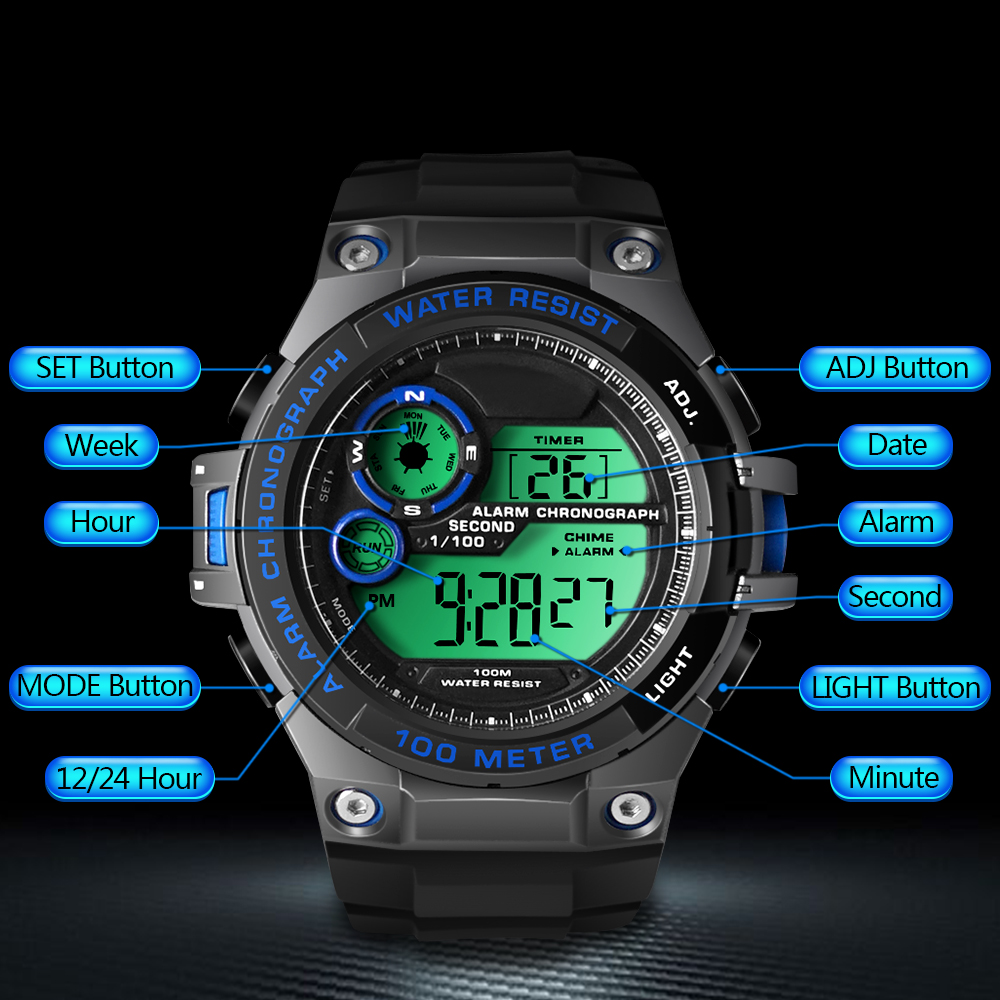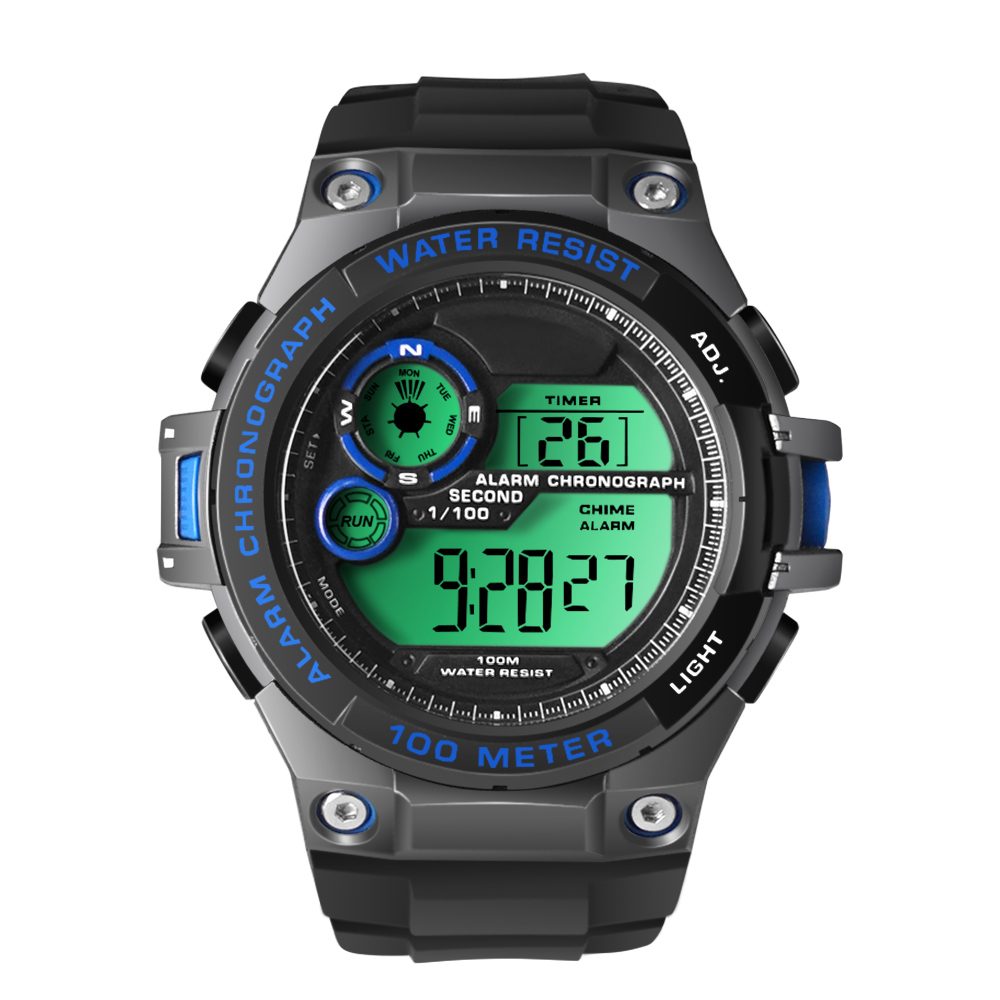Water resistance is a critical feature in modern watches, and understanding what "water resistant 10 ATM" means can help you make an informed decision when purchasing a timepiece. Whether you're an avid swimmer, diver, or simply someone who wants a watch that can withstand daily wear and tear, knowing the specifics of water resistance ratings is essential. In this article, we will delve into the world of water-resistant watches and clarify what the "10 ATM" rating entails.
Many people mistakenly believe that water-resistant watches are completely waterproof. However, the term "water resistant" refers to the watch's ability to withstand water exposure up to a certain level. The "ATM" rating plays a crucial role in determining how much water pressure the watch can handle. As you continue reading, we'll explore the nuances of this rating and why it matters.
This guide will cover everything you need to know about water-resistant watches, including the differences between various ATM ratings, how to care for your watch, and what activities are safe to engage in while wearing a water-resistant timepiece. By the end of this article, you'll have a comprehensive understanding of water resistance and how it applies to your lifestyle.
Read also:Free Remote Iot Platform With Ssh Key On Raspberry Pi
Table of Contents
- What is Water Resistant?
- What Does 10 ATM Mean?
- Common ATM Ratings and Their Uses
- Activities Suitable for 10 ATM Rated Watches
- How to Care for Water Resistant Watches
- Myths About Water Resistant Watches
- Factors Affecting Water Resistance
- Choosing the Right Watch for Your Needs
- Frequently Asked Questions
- Conclusion
What is Water Resistant?
When a watch is labeled as "water resistant," it means that the manufacturer has designed it to withstand certain levels of water exposure. However, this does not mean the watch is completely waterproof. The degree of water resistance is determined by the watch's ability to handle water pressure, which is measured in ATM (atmospheres).
Water resistance is achieved through a combination of gaskets, seals, and materials that prevent water from entering the watch case. It is important to note that water resistance is not permanent and can degrade over time due to wear and tear or exposure to harsh conditions.
How Water Resistance is Tested
Manufacturers test water resistance under controlled conditions, often using static pressure. This means that the watch is tested in a laboratory setting rather than in real-world scenarios. For example, a watch rated at 10 ATM is tested to withstand water pressure equivalent to 100 meters of depth. However, this does not necessarily mean it is suitable for deep diving, as dynamic pressure from movement in water can exceed the tested limits.
What Does 10 ATM Mean?
A watch rated at 10 ATM can withstand water pressure equivalent to 100 meters of depth. This makes it suitable for swimming, snorkeling, and other water-related activities. However, it is not designed for professional diving, as the dynamic pressure encountered during such activities can exceed the watch's tested limits.
It is important to understand that the ATM rating is a measure of static pressure and does not account for factors such as temperature changes, water turbulence, or sudden impacts. Always refer to the manufacturer's guidelines for specific recommendations regarding your watch's water resistance.
Common ATM Ratings and Their Uses
Water-resistant watches come with various ATM ratings, each designed for specific activities. Here's a breakdown of common ATM ratings and their suitability for different scenarios:
Read also:Unveiling The Truth About Trump Iq A Comprehensive Analysis
- 3 ATM: Suitable for everyday use, including rain and handwashing.
- 5 ATM: Ideal for light water exposure, such as swimming in shallow water.
- 10 ATM: Perfect for swimming, snorkeling, and water sports.
- 20 ATM: Designed for professional diving and extreme water activities.
Why Choose a 10 ATM Rated Watch?
A 10 ATM rated watch offers a balance between functionality and affordability. It is ideal for individuals who engage in water-related activities but do not require the specialized features of a dive watch. Whether you're swimming laps in the pool or exploring coral reefs while snorkeling, a 10 ATM rated watch will provide reliable performance.
Activities Suitable for 10 ATM Rated Watches
While a 10 ATM rated watch is not designed for professional diving, it is well-suited for a variety of water activities. Here are some examples:
- Swimming in pools or open water.
- Snorkeling in shallow waters.
- Water sports such as jet skiing or paddleboarding.
- Showering or bathing with the watch on.
However, it is important to avoid exposing your watch to high-pressure water jets, such as those found in showers or hoses, as this can compromise its water resistance.
How to Care for Water Resistant Watches
Proper maintenance is essential to ensure the longevity of your water-resistant watch. Here are some tips to help you care for your timepiece:
- Regularly check the seals and gaskets for signs of wear or damage.
- Have your watch professionally serviced every 2-3 years to maintain its water resistance.
- Rinse your watch with fresh water after exposure to saltwater or chlorine.
- Avoid exposing your watch to extreme temperatures or sudden temperature changes.
By following these guidelines, you can ensure that your watch remains water-resistant and continues to perform reliably.
Myths About Water Resistant Watches
There are several misconceptions surrounding water-resistant watches. Here are some common myths and the truth behind them:
- Myth: Water-resistant watches are completely waterproof.
Truth: Water-resistant watches are designed to withstand water exposure up to a certain level, as indicated by their ATM rating. - Myth: A 10 ATM rated watch can be worn while diving.
Truth: While a 10 ATM rated watch can handle swimming and snorkeling, it is not suitable for professional diving. - Myth: Water resistance is permanent.
Truth: Water resistance can degrade over time due to wear and tear or exposure to harsh conditions.
Factors Affecting Water Resistance
Several factors can affect the water resistance of a watch. These include:
- Gasket Condition: The seals and gaskets that prevent water from entering the watch can wear out over time, reducing its water resistance.
- Temperature Changes: Exposure to extreme temperatures or sudden temperature changes can cause the seals to expand or contract, potentially compromising water resistance.
- Dynamic Pressure: Activities that involve high-pressure water jets or rapid movement in water can exceed the watch's tested limits.
Regular maintenance and proper usage can help mitigate these factors and maintain your watch's water resistance.
Choosing the Right Watch for Your Needs
When selecting a water-resistant watch, consider the following factors:
- Your lifestyle and the activities you engage in.
- The watch's ATM rating and its suitability for your needs.
- The materials used in the watch's construction, such as stainless steel or titanium.
- The brand's reputation for quality and durability.
By carefully evaluating these factors, you can choose a watch that meets your requirements and provides reliable performance.
Top Brands for Water Resistant Watches
Some of the top brands known for producing high-quality water-resistant watches include:
- Seiko
- Casio
- Tissot
- Orient
These brands offer a wide range of options to suit different budgets and preferences.
Frequently Asked Questions
Q: Can I wear a 10 ATM rated watch while diving?
No, a 10 ATM rated watch is not designed for professional diving. It is suitable for swimming, snorkeling, and other water-related activities, but not for deep diving.
Q: How often should I have my water-resistant watch serviced?
It is recommended to have your water-resistant watch professionally serviced every 2-3 years to maintain its water resistance.
Q: Can I wear my watch in the shower?
While a 10 ATM rated watch can withstand water exposure, it is best to avoid exposing it to high-pressure water jets, such as those found in showers or hoses.
Conclusion
In conclusion, understanding what "water resistant 10 ATM" means can help you make an informed decision when purchasing a watch. A 10 ATM rated watch is ideal for swimming, snorkeling, and other water-related activities, but it is not suitable for professional diving. Proper maintenance and care are essential to ensure the longevity of your watch and maintain its water resistance.
We encourage you to share your thoughts and experiences with water-resistant watches in the comments below. If you found this article helpful, feel free to share it with your friends and family. For more informative content, explore our other articles on watches and accessories.


